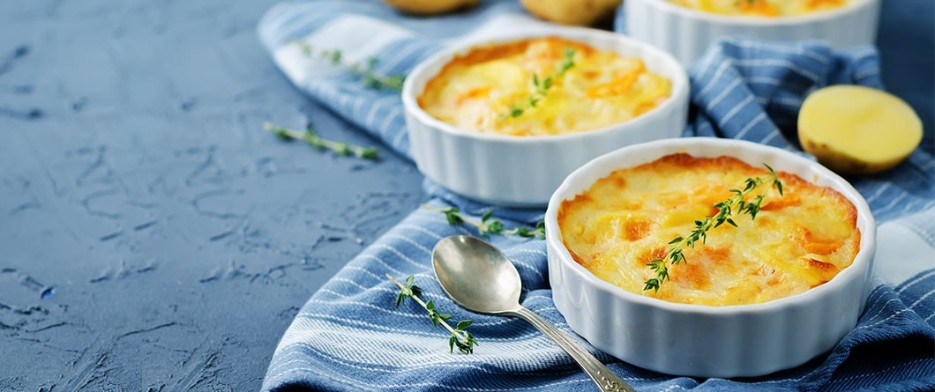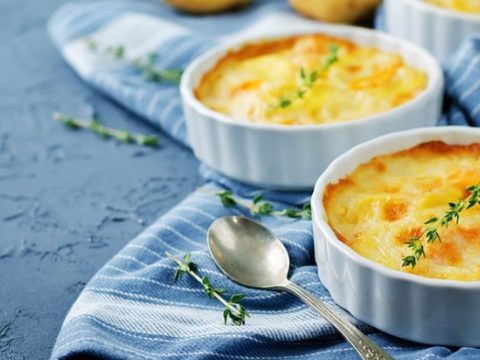Secrets for Perfect Gratin: Essential Tools and Techniques
Any cheese lover’s heart skips a beat at the word “gratin.” And rightly so—how could anyone remain indifferent to a dish straight from the oven, cloaked in a golden crust of melted cheese?
But did you know you don’t necessarily need cheese to gratinate a dish? In fact, many classic French cookbooks call for just two ingredients for the gratin topping: butter and breadcrumbs.
Discover in this article how to achieve a textbook gratin and which dishes you can elevate with this accessible culinary technique.
What Is Gratin and Why Does It Matter?
“Au gratin” is a French culinary term for dishes topped with a browned crust—typically made from cheese and cream, or breadcrumbs and butter. The word comes from “gratter,” meaning “to scrape.”
Gratin dishes are often enveloped in a silky sauce of cream or milk. That delicious crust on top prevents the interior from drying out and adds divine flavor and presentation value.
Many gratin recipes are easy to prepare and can be assembled ahead of time. Just sprinkle your favorite cheese mixed with crunchy breadcrumbs over the dish, bake until heated through, and you’ll end up with an irresistible crust.
Top Gratin Dishes
- Gratinated pasta has grown in popularity for its comfort, ease of preparation, and universal appeal.
- Vegetable gratins make veggies suddenly irresistible—think cauliflower, broccoli, sweet potatoes, Brussels sprouts, or stuffed zucchini.
- Potato gratin reigns supreme: layers of thin potato slices baked in cheese, cream, and butter.
- Moussaka is beloved everywhere, whether made with sliced potatoes or mashed potatoes.
Choosing the Right Bakeware
Despite their sophisticated look, gratin dishes require no special tools beyond the right baking vessel.
- Rectangular or oval baking dishes with handles (steel, cast iron, or ceramic) retain and distribute heat evenly.
- Individual ramekins for single servings of gratin or soufflé.
- Heatproof glass dishes (e.g., Pyrex) are also popular for gratins and puddings.
Essential Techniques for Perfect Gratin
Uniform Slicing
Slice vegetables to the same thickness—mandolines are ideal for achieving very thin, even slices.
Proper Layering
Use vegetables with similar cooking times (e.g., potatoes with carrots, broccoli with cauliflower, zucchini with peppers). Arrange slices at a 45° angle, slightly overlapping, so cream or béchamel seeps between layers.
Sauces
Use a warm cream sauce or béchamel flavored with garlic, nutmeg, thyme, or sage. Heating the sauce first shortens total bake time.
Temperature & Bake Time
Most gratins bake at up to 200 °C. Bake base ingredients until just tender, then sprinkle on cheese or breadcrumbs 10–15 minutes before the end to achieve a golden, crispy top without burning.
5 Secrets to the Perfect Crust
- Select cheeses that melt and brown well (Parmesan, Grana Padano, Cheddar, Gruyère).
- Grate fresh cheese yourself—avoid pre-shredded blends that contain starch fillers.
- For extra crunch, mix breadcrumbs with melted butter or olive oil before sprinkling.
- Garnish with fresh parsley, green onion, or chives after baking for flavor and color.
- Let the gratin rest 10 minutes after removing from the oven so the topping sets and the dish holds its shape when cut.


